Diptera.info :: Family forums :: Asilidae Forum
Who is here? 1 guest(s)
|
Choerades cf dioctriaeformis
|
|
| hedy2411 |
Posted on 26-06-2014 18:38
|
|
Member Location: Zeist, Holland Posts: 5232 Joined: 20.11.09 |
Who knows the name of this fly..? Found today in Zeist, Holland hedy2411 attached the following image:  [59.85Kb] Edited by hedy2411 on 26-06-2014 20:34 |
|
|
|
| ValerioW |
Posted on 26-06-2014 18:54
|
|
Member Location: Padova - Italy Posts: 982 Joined: 01.06.12 |
Not Dioctria, but Choerades sp. male. Considering the looks my hypothesis is C. cf. dioctriaeformis, that actually appears absent in Holland, while is present in the bigger countries surrounding Belenux (like Germany and France). |
|
|
|
| hedy2411 |
Posted on 26-06-2014 20:33
|
|
Member Location: Zeist, Holland Posts: 5232 Joined: 20.11.09 |
Hello Valerio, Thank you for your reaction and explanation. The name says "dioctriaeformis" so, it looks a like Dioctra and I was not so far away  I found it here in the region, it may be lost somehow. Maybe because the weather is quite nice here now. Regards, Hedy |
|
|
|
| ValerioW |
Posted on 26-06-2014 20:53
|
|
Member Location: Padova - Italy Posts: 982 Joined: 01.06.12 |
 possibly! Anyways, insects have no idea of countries borders or ID-cards so I guess they ignore them at all. I have no idea for the reasons of this species' name dioctriaeformis ; this is different from C. femorata (a very similar species) for few things, like more hairs in tergites (if you take care it has hairs not just on the back margin of thergites) , so if I was the taxonomist, I had baptized femorata as dioctriaeformis and viceversa, because Dioctria isn't a so hairy genus possibly! Anyways, insects have no idea of countries borders or ID-cards so I guess they ignore them at all. I have no idea for the reasons of this species' name dioctriaeformis ; this is different from C. femorata (a very similar species) for few things, like more hairs in tergites (if you take care it has hairs not just on the back margin of thergites) , so if I was the taxonomist, I had baptized femorata as dioctriaeformis and viceversa, because Dioctria isn't a so hairy genus  . . |
|
|
|
| ValerioW |
Posted on 26-06-2014 20:53
|
|
Member Location: Padova - Italy Posts: 982 Joined: 01.06.12 |
*tergites (not thergites!) |
|
|
|
| Quaedfliegh |
Posted on 26-06-2014 21:58
|
|
Member Location: Tilburg Netherlands Posts: 2198 Joined: 18.05.10 |
From the Netherlands only Choerades marginatus (marginata) is accepted at the moment until trustworthy information is published. Actaully most Dutch specimens seem to be C. femorata. Almost all (both sexes!) shiny white facial hair. Geller-Grimm notes that C dioctiaeformis is a doubtful species as it is very hard to seperate: http://www.robberflies.info/keyger/htmle/chodio.html Further more in available keys it says male C. dioctiaeformis should have white hair on first 3 tergites. This one has yellow hair. Long story short, in the Netherlands all these Choerades look-a-likes are named C. marginatus until more reliable information is being published. Research is going on. Havea look here: http://waarneming.nl/soort/photos/8219 Greetings, Reinoud Field guide to the robber flies of the Netherlands and Belgium: https://www.jeugdbondsuitgeverij.nl/product/field-guide-to-the-robberflies-of-the-netherlands-and-belgium/ https://www.nev.nl/diptera/ |
| ValerioW |
Posted on 26-06-2014 22:24
|
|
Member Location: Padova - Italy Posts: 982 Joined: 01.06.12 |
Quaedfliegh wrote: From the Netherlands only Choerades marginatus (marginata) is accepted at the moment until trustworthy information is published. Actaully most Dutch specimens seem to be C. femorata. Almost all (both sexes!) shiny white facial hair. Geller-Grimm notes that C dioctiaeformis is a doubtful species as it is very hard to seperate: http://www.robberflies.info/keyger/htmle/chodio.html Further more in available keys it says male C. dioctiaeformis should have white hair on first 3 tergites. This one has yellow hair. Long story short, in the Netherlands all these Choerades look-a-likes are named C. marginatus until more reliable information is being published. Research is going on. Havea look here: http://waarneming.nl/soort/photos/8219 Characters like antennae (scape/pedicel) and to a lesser level facial gibbosity hairs (marginatus has usually yellow, while here are white) are not much compatible with marginatus. femorata has hairs confined to hind margins of T1-T3 while dioctriaeformis sometimes (as this specimen) has them also in other parts of tergites. Hair's colour is the same in femorata and dioctriaeformis |
|
|
|
| ValerioW |
Posted on 26-06-2014 22:43
|
|
Member Location: Padova - Italy Posts: 982 Joined: 01.06.12 |
Using the link that you kindly provided http://www.robberflies.info/keyger/htmle/keychoerades.html I still arrive at C. dioctriaeformis (that has a lower scape/pedicel ratio than femorata, even if it's not written in this website). But local peculiarities, like particular colors of dutch marginata (I was unaware of them), are not considered in those keys, so they may be not suitable for Holland, and in this case better to stop to Choerades sp. male. Now I understand why in the checklist only C. marginata, if I remember correctly, is present in Holland. |
|
|
|
| Quaedfliegh |
Posted on 27-06-2014 01:13
|
|
Member Location: Tilburg Netherlands Posts: 2198 Joined: 18.05.10 |
Hi Valerio, Strictly i have to agree with your conclusion that this is a Choerades sp. male. Historically in the Netherlands these creatures are labelled as C. marginatus. My personal opinion is to keep it that way until a thorough study is published including a DNA check. National perspectives seem to play a role : ) Overall the Dutch specimens tend toward C. femorata. (The ones i studied) Greetings, Reinoud Field guide to the robber flies of the Netherlands and Belgium: https://www.jeugdbondsuitgeverij.nl/product/field-guide-to-the-robberflies-of-the-netherlands-and-belgium/ https://www.nev.nl/diptera/ |
| ValerioW |
Posted on 27-06-2014 07:34
|
|
Member Location: Padova - Italy Posts: 982 Joined: 01.06.12 |
Hello Rei, about the femorata vs dioctriaeformis , I've also red the dubts about the existence of the last one (that still appears to exist taxonomically), but what appears to me clear in this specimen is the abundance of hairs along tergites, a thing unusual for femorata, that some authors ascribe to dioctriaeformis . Using a "dubtful" species ID is risky, but I couldn't find femorata much convincing so I've chosen dioctriaeformis. DNA would be a great way to track species fingerprint, and moreover, I think there can be an explosion of species. A nice way can be to set the minimum set of genes (with aesthetic effect) inside a particular genus with quite preserved sequences (a kind of genus fingerprint, that means--> reduce operator-dependency, subjectivity, and increase reproducibility and objectivity), establish a cut-off of variability, and so screen a array of specimen. The only problem, aside the time consumption, is the €€€€ consumption, and I'm afraid that there's not too much business-interest in this family, that I personally like and appreciate very much. Some genus is sporadically studied as bio-defense against pests, but quite often is abandoned due to scarce prey-specificity (that means that they also attack "useful" insects). |
|
|
|
| ValerioW |
Posted on 27-06-2014 07:38
|
|
Member Location: Padova - Italy Posts: 982 Joined: 01.06.12 |
...Sorry, I forgot to add in the first part that femorata has also a greater scape/pedicel ratio, that here I don't think is reached, and this specimen seems to have more dioctriaeformis ratio; the photo maybe isn't perfect for a detailed valuation of this ratio, but I think that can be enough to approximate the proportions of antennomeres.
Edited by ValerioW on 27-06-2014 07:39 |
|
|
|
| hedy2411 |
Posted on 27-06-2014 18:08
|
|
Member Location: Zeist, Holland Posts: 5232 Joined: 20.11.09 |
I have some other pictures that may help, if not, tell me and I will remove them, OK
hedy2411 attached the following image:  [68.53Kb] |
|
|
|
| hedy2411 |
Posted on 27-06-2014 18:08
|
|
Member Location: Zeist, Holland Posts: 5232 Joined: 20.11.09 |
...and this one...
hedy2411 attached the following image:  [70.71Kb] |
|
|
|
| hedy2411 |
Posted on 27-06-2014 18:09
|
|
Member Location: Zeist, Holland Posts: 5232 Joined: 20.11.09 |
..and this one...
hedy2411 attached the following image:  [54Kb] |
|
|
|
| ValerioW |
Posted on 27-06-2014 18:15
|
|
Member Location: Padova - Italy Posts: 982 Joined: 01.06.12 |
The last photo is really beautiful! photo 3, confirms a really hairy abdomen, that is not typical of femorata) |
|
|
|
| ValerioW |
Posted on 27-06-2014 18:17
|
|
Member Location: Padova - Italy Posts: 982 Joined: 01.06.12 |
But in Holland, as Reinoud said, we have to accept C. marginata, even if we dramatically know it's not  |
|
|
|
| ValerioW |
Posted on 27-06-2014 18:20
|
|
Member Location: Padova - Italy Posts: 982 Joined: 01.06.12 |
...or we can use a trick. We can say: "in Holland this should be C. marginata. Out of Holland, if we accept C. dioctriaeformis as a particular species with antennae and hairs in tergites different from C. femorata, we can say it is C. dioctriaeformis " |
|
|
|
| Jump to Forum: |




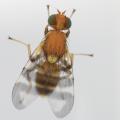
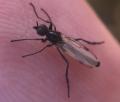

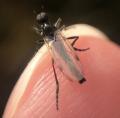
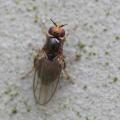


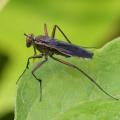


 but don't see the image in the post.
but don't see the image in the post.